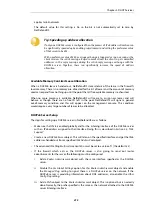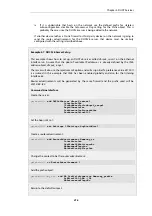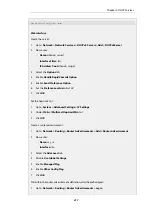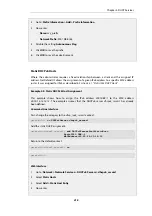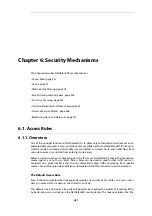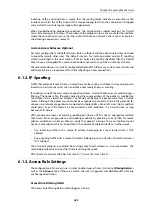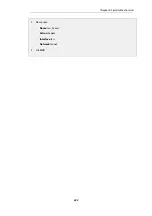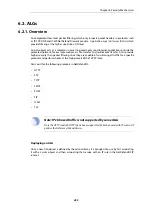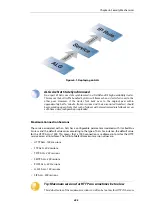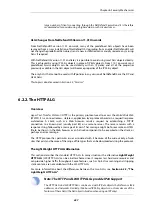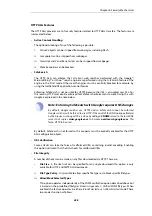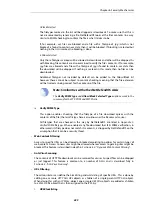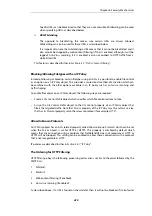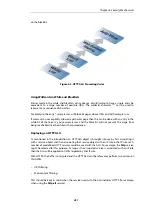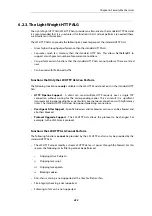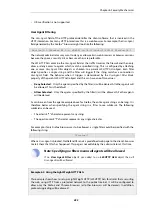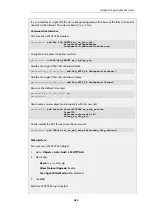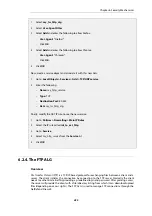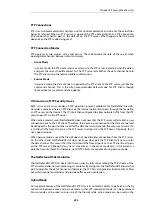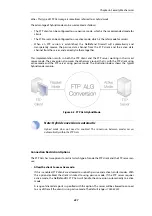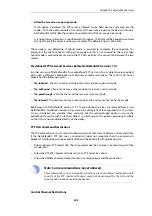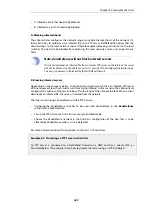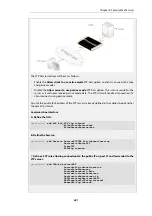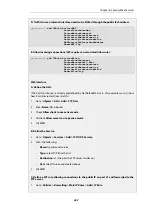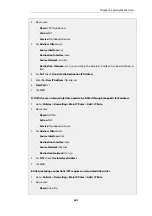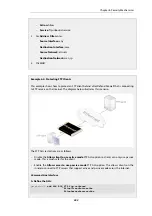
i. Block Selected
The filetypes marked in the list will be dropped as downloads. To make sure that this is
not circumvented by renaming a file, NetDefendOS looks at the file's contents (in a way
similar to MIME checking) to confirm the file is what it claims to be.
If, for example,
.exe
files are blocked and a file with a filetype of
.jpg
(which is not
blocked) is found to contain
.exe
data then it will be blocked. If blocking is selected but
nothing in the list is marked, no blocking is done.
ii. Allow Selected
Only those filetypes marked will be allowed in downloads and other will be dropped. As
with blocking, file contents are also examined to verify the file's contents. If, for example,
.jpg
files are allowed and a file with a filetype of
.jpg
is found to contain
.exe
data then
the download will be dropped. If nothing is marked in this mode then no files can be
downloaded.
Additional filetypes not included by default can be added to the Allow/Block list
however these cannot be subject to content checking meaning that the file extension
will be trusted as being correct for the contents of the file.
Note: Similarities with other NetDefendOS ALGs
The
Verify MIME type
and
Allow/Block Selected Types
options work in the
same way for the FTP, POP3 and SMTP ALGs.
iv.
Verify MIME Type
This option enables checking that the filetype of a file download agrees with the
contents of the file (the term
filetype
here is also known as the
filename extension
).
All filetypes that are checked in this way by NetDefendOS are listed in
. When enabled, any file download that fails MIME verification, in
other words its filetype does not match its contents, is dropped by NetDefendOS on the
assumption that it can be a security threat.
•
Web Content Filtering
Access to specific URLs can be allowed or blocked according to policies for certain types of
web content. Access to news sites might be allowed whereas access to gaming sites might be
blocked. This feature is described in depth in
Section 6.3.4, “Dynamic Web Content Filtering”
.
•
Anti-Virus Scanning
The contents of HTTP file downloads can be scanned for viruses. Suspect files can be dropped
or just logged. This feature is common to a number of ALGs and is described fully in
Section 6.5, “Anti-Virus Scanning”
•
URL Filtering
The administrator can define the
blacklisting
and
whitelisting
of specific URLs. This is done by
adding one or more
HTTP ALG URL
objects as children of a single parent
HTTP ALG
object.
When doing this with an
IP Policy
, object, one or more
URL Filter
objects are added as children
to a
Web Profile
object that is then assigned to the
IP Policy
.
i.
URL Blacklisting
Chapter 6: Security Mechanisms
429
Summary of Contents for NetDefendOS
Page 30: ...Figure 1 3 Packet Flow Schematic Part III Chapter 1 NetDefendOS Overview 30 ...
Page 32: ...Chapter 1 NetDefendOS Overview 32 ...
Page 144: ...Chapter 2 Management and Maintenance 144 ...
Page 284: ...Chapter 3 Fundamentals 284 ...
Page 392: ...Chapter 4 Routing 392 ...
Page 419: ... Host 2001 DB8 1 MAC 00 90 12 13 14 15 5 Click OK Chapter 5 DHCP Services 419 ...
Page 420: ...Chapter 5 DHCP Services 420 ...
Page 573: ...Chapter 6 Security Mechanisms 573 ...
Page 607: ...Chapter 7 Address Translation 607 ...
Page 666: ...Chapter 8 User Authentication 666 ...
Page 775: ...Chapter 9 VPN 775 ...
Page 819: ...Chapter 10 Traffic Management 819 ...
Page 842: ...Chapter 11 High Availability 842 ...
Page 866: ...Default Enabled Chapter 13 Advanced Settings 866 ...
Page 879: ...Chapter 13 Advanced Settings 879 ...

